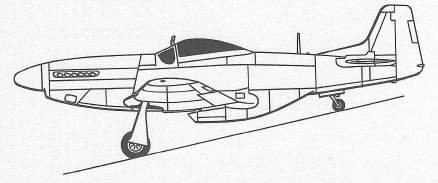PC Pilot
The Complete Guide to Computer Aviation
by Steve Smith
CHAPTER EIGHT
ELECTRONIC ARTS' CHUCK YEAGER'S AIR COMBAT
A Revolution in Aerial Warfare
Air combat changed far more radically between the end of World War II and the beginning of the war in Vietnam than in the twenty years since our military involvement in Indochina ended, yet few sims reflect the shift from prop-plane dogfights (World War II) to jet dogfights (Korea) to missile dogfights (Southeast Asia). Chuck Yeager's Air Combat is a notable exception.
During most of World War II, air combat—in propeller-driven planes capable of no more than 400 miles per hour—was up close and personal. A pilot's first contact with the enemy was visual, and the only air-to-air weapons were guns. If you were a fighter pilot, this meant that you had to aim your whole airplane at your opponent to shoot at him. You had to get close. And if you were successful, you were close enough to see him die.
Late in the war, the Germans introduced the world's first operational jet fighter, the Messerschmitt Me-262. With closing speeds approaching 1,000 miles per hour, air combat was becoming less personal, and it was close only for the blink of an eye.
The Germans also developed airborne radar for their night fighters, so they could see on a flickering cathode-ray tube what they could not see with their own eyes. The Allies developed airborne radar receivers, so they knew when they were being observed…but they could not see their observers. The Germans also added airborne rockets, so they could attack from beyond the range of the bombers' guns, but they were not guided rockets—pilots still had to aim the entire plane at the target.
Despite last-ditch efforts like the Me-262, America had enjoyed such massive air superiority (or, as the SAC boys used to say, air supremacy) that we were caught completely off guard only five years later by a better-than-equal adversary, the MiG. Our intelligence community had lulled us into thinking anything the Russians produced had to be crude, unsophisticated, derivative, inferior—hardly worth bothering about.
While American jets had gotten steadily heavier and more complex, the Russians kept the MiGs (named after the design team of Mikoyan and Gurevich) simple and light. With less mass to haul around, not only could the MiGs outmaneuver our jets—first Lockheed's straight-wing P-80 Shooting Star, and later North American's swept-wing F-86 Sabrejet—but they could climb faster, too.
Our jets were faster in a straight line—irrevalent under the Rules of Engagement, dictated by political considerations, which prohibited our pilots from pursuit across the Yalu River. The MiGs didn't have to run; they could hide—bounching us from above, then diving for the safe haven north of the Yalu. The killing ground was called "MiG Alley" and our boys were getting clobbered.
American military aviation could have gone either way—toward lighter, more maneuverable fighters…or toward heavier, more complicated aircraft. Toward the end of the Korean conflict, the issue became moot; we had found the MiG's weaknesses (only part of the tailplane moved, limiting high-G maneuvers; plus, the pilots were poorly trained), and the kill ratio shot up to ten-to-one in our favor. Once again, we got overconfident.



North American P-51 Mustang
Table of Contents | Previous Section | Next Section
